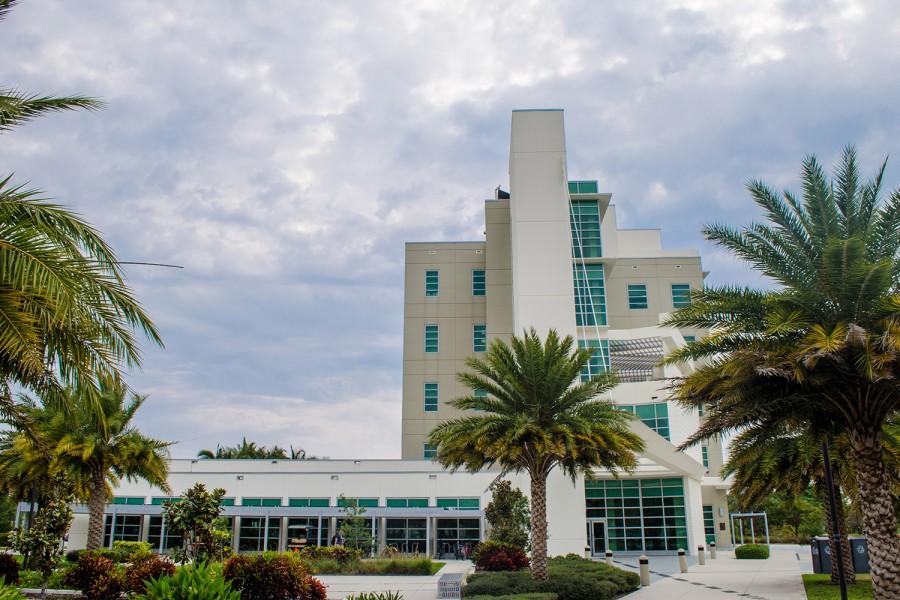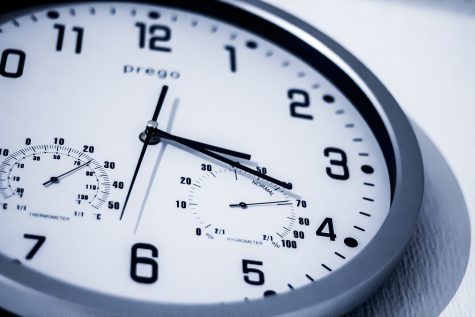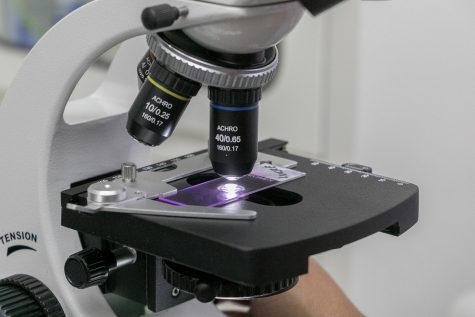Engineering East is LEED certified, but what does that mean?
The Engineering East building has the highest certification in green innovations, yet not many know what that means
May 2, 2015
Eco-friendly designed buildings have always seemed to be something seen in utopian movies, and FAU seems to have one. The environmentally conscious Engineering Building is boasted about on school tours and when entering FAU as being certified in Leadership in Energy and Environmental Design (LEED) through the U.S. Green Building Council because of its green technology. But how exactly does this certification process work and why does it matter?
Not many students or staff knew the answer, only able to be found out through plaques above the elevator doors. The building has more features than what is seen and its certification was not something simply handed to FAU either.

When the UP asked staff and students if they had opinions on the building, numerous people needed an explanation on what LEED was. The receptionists who worked in the lobby exchanged confused looks when asked where someone could get more information on the certification, and when the UP asked students, they did not wish to answer. The reason was they simply did not know anything about the building.
According to the USGBC website , to be LEED certified means to be a leader in greener energy and engineering design. FAU was graded in the building design and construction category, and grading is a lengthy process. A building’s request could undergo up to three separate reviews that could take up to 25 days each and the cost of being certified can be over $10,000.
The grading system is as follows: to be simply LEED certified, the building must get 40-49 points. Silver is 50-59 points earned, Gold is 60-79 points, and highest is LEED platinum which is 80+ points earned.
When reviewed in 2011, the Engineering East building received 80 points when calculated and rounded, making them platinum certified.
Above the elevator doors, the LEED certification is displayed for all to see along with plaques all around the building explaining the green technology. One example is the chilled beam technology, which uses heat from large servers in a specialized room to warm the air and help keep the air at a specified temperature, reducing the energy used by about 35 percent.
 According to a FAU Press Release, in 2011, there is also a solar hot water system that uses solar panels to capture heat from the sun to supply hot water in the building. The building also has enough windows to provide natural lighting to 90 percent of the rooms.
According to a FAU Press Release, in 2011, there is also a solar hot water system that uses solar panels to capture heat from the sun to supply hot water in the building. The building also has enough windows to provide natural lighting to 90 percent of the rooms.
Another feature is the cloud. Prior to the cloud, a server accessible online, there would have to be specific labs for each class because only the lab computers had the needed resources and software.
Now, the cloud allows students and staff to have access to the resources they need to complete their workloads from any classroom or even at home. This technology is labeled as ideal for replacing desktops and workstations because its reduces energy usage up to 85 percent and it emits less heat.
There are directory screens placed around the building as well that are used to find classes or teachers and show the consumption of power in the building. The building uses 150 kilowatts of power every five minutes, averaging of about 43,200 kilowatts a day which is, according to USGBC website, an 11 percent decrease from the average college building.
 The Engineering East building also has a rooftop garden. It’s located on the fifth floor, beside the solar panels that partially power the building. The plaque next to the garden explains how the plants have been watered daily and are maintained. Once outside though, some plants appear dry and brown.
The Engineering East building also has a rooftop garden. It’s located on the fifth floor, beside the solar panels that partially power the building. The plaque next to the garden explains how the plants have been watered daily and are maintained. Once outside though, some plants appear dry and brown.
The same 2011 press release explained that FAU provides LEED education to those who want it, a faculty member when asked in regards to it went on to refer to another person. An Engineering East lobby receptionist believed the Dean’s office would have the answers but the receptionist in that office did not know either.
It was later found out that there is a LEED representative, Lee Cooke, who is the representative of all South Florida, the largest USGBC chapter. One employee who passed by stated “he comes around once a week,” and that the information on his door was the best way to come in contact with him. The UP reached out to Cooke, but did not receive a response as of publication time.
Marco Canino, a grad employee working at Engineering East, was one of the many staff members who understood the innovations but not what LEED was. “I know it [is] the right mentality for the future,” said Canino. “It was really only told to me during my freshman orientation five years ago.”
According to some staff members, the building’s innovations and LEED certification is mostly explained to freshman and visitors. Linsey Lalouy was one of the few students who had something to say about the building, although his answers were similar to that of Canino’s. “I’ve never heard of [LEED] but I know the building is green and it uses less energy,” said Lalouy.
LEED is beginning to teach many businesses how to be environmentally smarter. FAU, being one of those businesses, has chosen to follow LEED and its ideals to become more environmentally conscious. FAU claims that they are spreading LEED ideals to students and staff. Although the only way they are informing them is with a small plaque above the elevator doors.
















